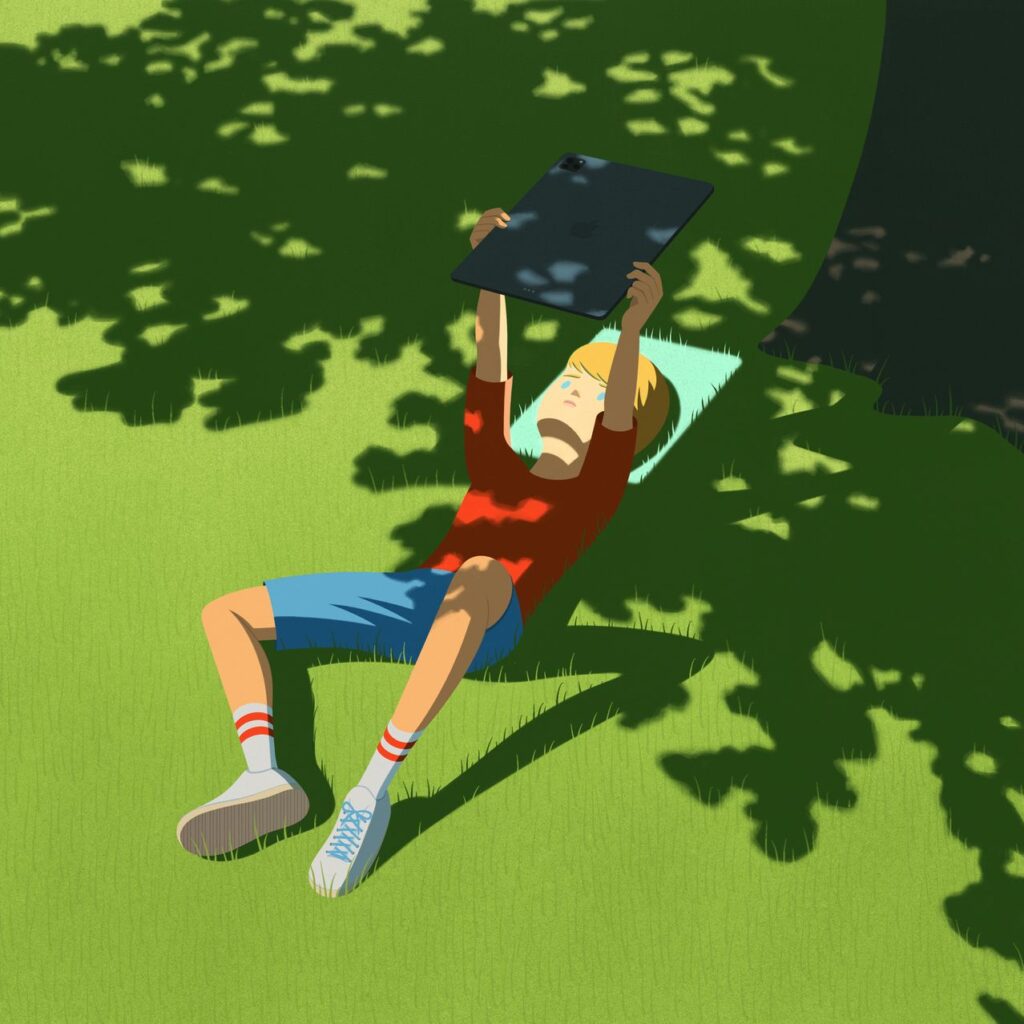Nearsightedness is on the rise worldwide, but there are ways to help children preserve their vision
Kids aren’t spending enough time outside. It’s fueling an epidemic of nearsightedness.
Nearsightedness develops in childhood, typically between ages 5 and 16, and it’s closely linked to a lack of exposure to sunlight. Eye doctors say more kids are developing the condition and at earlier ages. Half the global population is expected to be nearsighted by 2050, up from 30% now, according to the World Health Organization.
Sure, kids choosing screens over outdoor fun is a long-running—potentially overplayed—theme. And as annoying as it is to parents, it’s been hard to quantify the damage. In the case of eyesight, however, the research is clear. Our vision is getting worse because of our relationship with our devices.
While there’s no consensus on how much time kids spend outside, doctors like to cite one stat, from a 2015 University of Michigan study: Kids spent just seven minutes a day in unstructured outdoor play time. If anything, that figure has shrunk in recent years.
Schools and child-care centers still have recess, and many kids play outdoor sports, so they’re likely getting more outdoor time than that. But they aren’t wandering the streets or riding bikes like they did in past decades.
People with myopia, the condition’s formal name, have a hard time seeing things clearly in the distance. It’s referred to as nearsightedness or shortsightedness because people can see things up close more easily. When eyes don’t get enough natural light, they grow longer, say researchers. The longer shape makes it harder to focus, so objects in the distance appear blurry.
“There’s something in the spectrum of visible light that prevents the eyeball from growing too much,” says Dr. Tommy Korn, an ophthalmologist in San Diego.
If myopia is left untreated with glasses or contact lenses, it can eventually lead to cataracts or blindness. Korn and other doctors say myopia diagnoses have accelerated in the past three years as schoolwork shifted online and kids spent more time inside during the pandemic. Myopia progression among children increased by up to 35% during the pandemic, according to one report.
Tech reminders
“Kids are busy with structured activities and when they’re given the opportunity to have free time, they often choose inside activities like electronics,” says Dr. Jennifer Haggar, a clinical associate professor of pediatrics at the University of South Dakota Sanford School of Medicine.
Children spend more than seven hours a day looking at screens, on average, and some studies find teens are online almost constantly.
But tech can be part of the solution.
Apple this fall is offering two new features to assist in the prevention of myopia.
With WatchOS 10, which is expected next month, the device’s ambient light sensor will track how much time people are spending in daylight. The feature will be available on Apple Watch Series 6 and later and on Apple Watch SE, which is the model worn most by young kids. That data will show up in the Health app of the iPhone with which the watch is paired.
Apple is also introducing a new feature in iOS 17 and iPadOS 17, also due out next month, for devices that have Face ID. It prompts people to hold their iPhones or iPads farther away if the devices’ sensors detect they’re being held closer than 12 inches for an extended period. Once you get the software update, you can enable the feature by going to Screen Time in Settings and turning on Screen Distance.
Korn says decreasing the amount of time you spend looking closely at books or digital devices can reduce the progression of myopia.
What else you can do
Find small chunks of time. The International Myopia Institute recommends children spend 80 to 120 minutes in daylight every day. This doesn’t have to be all at once, say doctors—15 minutes here and there adds up. Send your kids to the backyard while you prepare dinner, have them walk to school if possible and build in other routine ways for them to catch some rays.
Do any outside activity. The time kids spend outside doesn’t have to involve sports or other strenuous physical activity. Taking a walk or reading a book under a tree is fine. (Just be sure your kids hold their books more than a foot away from their face.)
Don’t worry about the weather. You don’t have to be exposed to direct sunlight to derive benefits. Being in the shade or under clouds is fine.
Make it a family thing. Haggar, the pediatrician, says kids are more likely to spend time outside if their parents do, so do outdoor activities together.
Track it. Tracking goals is thought to lead to more accountability, so keep a log of how much time your kids spend outside. You can use plain old paper if you don’t have a watch or other device.
Original article can be found here on The Wall Street Journal.


